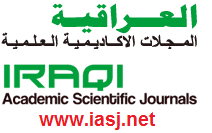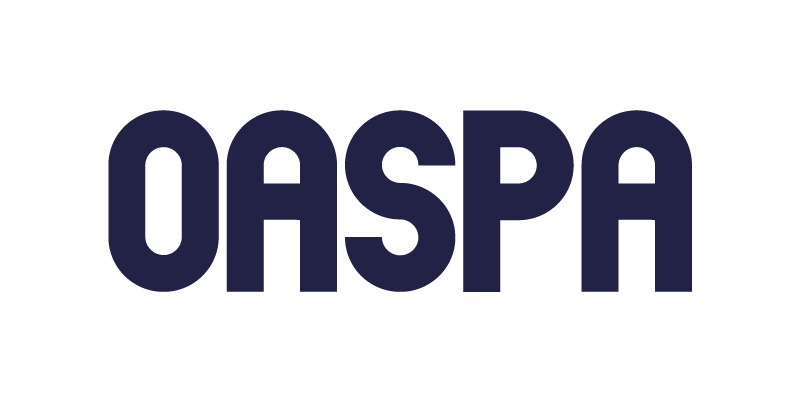Optimization of Drilling Well Design: A Review
DOI:
https://doi.org/10.31699/IJCPE.2022.4.11Keywords:
optimization of well design, casing seat, casing design, wellbore trajectoryAbstract
Drilling well design optimization reduces total Authorization for Expenditures (AFE) by decreasing well constructing time and expense. Well design is not a constant pattern during the life cycle of the field. It should be optimized by continuous improvements for all aspects of redesigning the well depending on the actual field conditions and problems. The core objective of this study is to deliver a general review of the well design optimization processes and the available studies and applications to employ the well design optimization to solve problems encountered with well design so that cost effectiveness and perfect drilling well performance are achievable. Well design optimization processes include unconventional design(slimhole) compared with fat design, in addition to optimizing casing setting depth selection and casing string loads. Finally, we demonstrate well trajectory design considerations and optimization. The optimization process that mentioned above is significantly reduce drilling cost and time since, slimhole design with smaller casing and hole size reduce mud volume cost, steel cost and pump fuel cost. Optimum casing seat selection can ovoid serious problem such as kick and losses that increase nonproductive time (NPT) if kick tolerance and downhole pressure profile is not considered. Anticipating optimum stress loads in casing design is most effective way to reduce casing strings cost avoiding additional cost for designing with useless worst conditions. Wellbore trajectory optimization with geomechnic consideration is major concern to reduce the problem encountered with high torque, drag, formation collapse that result stuck pipe and non-productive time (NPT).
Received on 17/06/2022
Accepted on 22/07/2022
Published on 30/12/2022
References
D. Hankins, S. Salehi, and F. Karbalaei Saleh, “An Integrated Approach for Drilling Optimization Using Advanced Drilling Optimizer,” J. Pet. Eng., vol. 2015, pp. 1–12, 2015, doi: 10.1155/2015/281276.
A. A. Hashem and F. Khalaf, “Casing Design Considerations for Horizontal Wells,” J. King Saud Univ. - Eng. Sci., vol. 6, no. 2, pp. 265–278, 1994, doi: 10.1016/S1018-3639(18)30611-1.
Z. A. Al Kalbani, C. A. Moreno, A. E. Agguirre, M. AlJahwari, A. Sutherland, and M. Elyas, “Design optimization for drilling development wells,” Soc. Pet. Eng. - SPE Gas Oil Technol. Showc. Conf. 2019, GOTS 2019, no. November 1978, pp. 1–11, 2019, doi: 10.2118/198562-ms.
M. M. Majeed and A. A. Alhaleem, “Enhancing Drilling Parameters in Majnoon Oilfield,” Iraqi J. Chem. Pet. Eng., vol. 20, no. 2, pp. 71–75, 2019, doi: 10.31699/ijcpe.2019.2.9.
E. Wiktorski, A. Kuznetcov, and D. Sui, “ROP optimization and modeling in directional drilling process,” Soc. Pet. Eng. - SPE Bergen One Day Semin. 2017, no. April, 2017, doi: 10.2118/185909-ms.
G. R. Samuel and A. Gonzales, “Optimization of multistring casing design with wellhead growth,” Proc. - SPE Annu. Tech. Conf. Exhib., vol. DELTA, pp. 771–775, 1999, doi: 10.2118/56762-ms.
A. S. Azi, “Casing Setting Depth using Bottom-Up Method for Development Well in the Offshore,” J. Eng. Scince, vol. 1, no. 1, pp. 36–41, 2020.
M. Halafawi and L. Avram, “Wellbore trajectory optimization for horizontal wells: the plan versus the reality,” J. Oil, Gas Petrochemical Sci., vol. 2, no. 1, pp. 49–54, 2019, doi: 10.30881/jogps.00024.
K. Boonsri and J. Natepracha, “Potentiality for pre-well planning in development field - The next step to reducing time and enhancing well planning by collaboration Drilling’s and Geoscience’s workflow - Case STUDY: Development field in Gulf of Thailand,” Soc. Pet. Eng. - IADC/SPE Asia Pacific Drill. Technol. Conf. 2014 Driv. Sustain. Growth Through Technol. Innov., pp. 448–458, 2014, doi: 10.2118/170516-ms.
J. L. Lummus, “Drilling Optimization,” J. Pet. Technol., vol. 22, no. 11, pp. 1379–1388, 1970, doi: 10.2118/2744-pa.
A. Shokry and A. Elgibaly, “Well design optimization through the elimination of intermediate casing string,” J. King Saud Univ. - Eng. Sci., no. xxxx, 2021, doi: 10.1016/j.jksues.2021.01.002.
E. David and P. Vogelsberg, “Reducing horizontal hole size from 8.5 to 6.75 reduces unconventional well construction cost by 25%,” Soc. Pet. Eng. - Abu Dhabi Int. Pet. Exhib. Conf. 2018, ADIPEC 2018, 2019, doi: 10.2118/192953-ms.
K. K. Millheim, M. Prohaska, and B. Thompson, “Slim hole drilling technology - Past, present, future,” Soc. Pet. Eng. - PetroVietnam 1995, PTV 1995, 1995, doi: 10.2118/30151-ms.
N. Adams J, Drilling Engineering A Complete Well Planning Approach “, Penwell Publishing Company, Tulsa, Oklahoma,1985. 1985.
F. R. Holasek, R. K. Singh, and S. Shanker, “Determination of 20-in. Conductor setting depth in deepwater wells in the Krishna-Godavari Basin offshore India,” SPE/IADC INDIAN Drill. Technol. Conf. Exhib. 2006 - Drill. India Challenges Oppor., vol. 2006, pp. 265–272, 2006, doi: 10.2523/103667-ms.
“Well Engineering and Production Operations Management System Casing Design Manual,” no. November, 2001.
CasingSeat; Release 5000.1.7 Training Manual. 2010 by Landmark Graphics Corporation.
Heriot Watt University, ''Drilling Engineering Manual, ''Petroleum Engineering Department, UK,2015.
StressCheck; Release 5000.1.7 Training Manual. 2011 by Landmark Graphics Corporation.
H. Rabia, “Well Engineering & Construction Hussain Rabia,” p. 1 to 789, 2002.
T. Manual, “COMPASS Software Release 5000.1.12,” no. 157605, 2014.
E. Kroell and H. F. Spoerker, “Slimhole completion & production - what to do after we drilled the well?” Proc. Drill. Conf., pp. 705–712, 1996, doi: 10.2118/35129-ms.
R.N., Worrall et al.: "An Evolutionary Approach to Slim-hole Drilling Evaluations and Completion", - SPE 24965, Europec 1992, Cannes, France.
O. Santos, I. Adasani, J. Azar, and F. Escorihuela, “Determination of Casing Setting Depth Using Kick Tolerance Concept,” 2007, doi: 10.2523/30220-ms.
A. H. Assi, “Geological Considerations Related to Casing setting depth selection and design of Iraqi oil wells (case study),” vol. 23, no. 2, pp. 35–42, 2022. 10.31699/ijcpe.
A. Y. Othman, “Investigation of casing shoe depth determination taking into consideration the Kick Tolerance and Well Integrity,” no. May, 2014.
A. Panagiotis, “Design of the full casing program in a deviated well,” 2018.
I. Maitham, “Drilling risk management and economic evaluation in missan oil fields,” 2021.
A. K. Manshad, H. Jalalifar, and M. Aslannejad, “Analysis of vertical, horizontal and deviated wellbores stability by analytical and numerical methods,” 2014, doi: 10.1007/s13202-014-0100-7.
M. A. Mohiuddin, K. Khan, A. Abdulraheem, and M. R. Awal, “Analysis of wellbore instability in vertical, directional, and horizontal wells using field data,” vol. 55, pp. 83–92, 2007, doi: 10.1016/j.petrol.2006.04.021.
X. Yi, H. E. Goodman, R. S. Williams, W. K. Hilarides, and C. Corp, “Building a Geomechanical Model for Kotabatak Field with Applications to Sanding Onset and Wellbore Stability Predictions,” 2008.
M. Chabook, A. Al-ajmi, and V. Isaev, “International Journal of Rock Mechanics & Mining Sciences The role of rock strength criteria in wellbore stability and trajectory optimization,” Int. J. Rock Mech. Min. Sci., vol. 80, pp. 373–378, 2015, doi: 10.1016/j.ijrmms.2015.10.003.
Azar JJ, Samuel GR. Drilling Engineering. PennWell books; 2007.
Wi. Mitchell, “Advanced Oilwell Drilling Engineering Handbook & Computer programs,” p. 605, 1995.
Bourgoyn aT, Millheim KK, Chenevert ME, Young FS. Applied drilling engineering. SPE Textbook Series. 1991;2.
Z. Nie, Z. Zhang, H. Luo, and K. Zou, “Key technologies for directional well drilling in high-pressure anhydrite salt layers,” Nat. Gas Ind. B, vol. 5, no. 6, pp. 598–605, 2018, doi: 10.1016/j.ngib.2018.11.008.
M. S. Al-jawad, H. Abdul, and H. Abdul, “Design of Horizontal Well Program for Ajeel Field,” vol. 15, no. 1, pp. 59–63, 2014.
R. S. Carden and R. D. Grace, “H ORIZONTAL AND D IRECTIONAL Presented by,” 2007.
Downloads
Published
Issue
Section
License
Copyright (c) 2022 Iraqi Journal of Chemical and Petroleum Engineering

This work is licensed under a Creative Commons Attribution-NonCommercial 4.0 International License.












